Sell or Auction Your Pennsylvania Herald General Advertiser September 20 1787 for up to Over $100,000 or More at Nate D. Sanders Auctions
FREE APPRAISAL. To buy, auction, sell or consign your Pennsylvania Herald General Advertiser September 20 1787 that is for sale, please email your description and photos to [email protected] of Nate D. Sanders Auctions (http://www.NateDSanders.com).
Free Appraisal, Auction or Sell Your Pennsylvania Herald General Advertiser September 20 1787
Below is a recent realized price for a Pennsylvania Herald General Advertiser September 20 1787 item. We at Nate D. Sanders Auctions can obtain up to this amount or more for you:
Pennsylvania Herald General Advertiser September 20 1787. Sold for over $100,000.
The following are some related items we have sold:
The most influential political cartoon in the history of America, the ”JOIN, or DIE” severed rattlesnake designed by Benjamin Franklin and published in his ”Pennsylvania Gazette” on 9 May 1754. This incredibly scarce newspaper is the very first printing of the ”JOIN, or DIE” cartoon, and the only known copy apart from one other housed in the permanent collection at the Library of Congress.
Frustrated by the colonists’ inability to join forces against westward expansion by the French, Franklin created this cartoon of a rattlesnake, cut into 8 pieces symbolizing the American colonies, to dramatically impart the effective message: join together as one cohesive body, or die. Along with the cartoon, Franklin published an editorial in the newspaper, urging the colonists to work together, reading in part, ”…The Confidence of the French in this Undertaking seems well-grounded on the present disunited State of the British Colonies…while our Enemies have the very great Advantage of being under one Direction, with one Council, and one Purse…”
Little did Franklin know at the time that his symbol of the dis-united rattlesnake would echo over twenty years later to inspire the colonists to unite against the British – Paul Revere added the ”JOIN, or DIE” cartoon to the nameplate of his paper, the ”Massachusetts Spy”, and even later, with the ”Don’t Tread on Me” flag, any individual or group whose personal liberty is threatened. The phrasing has also proved highly enduring, likely influencing John Stark, the Revolutionary War General from New Hampshire whose toast, ”Live free or die: Death is not the worst of evils”, inspired New Hampshire’s motto, and again suggests that personal liberty is one of the highest human values, and a founding tenet of the United States.
Franklin’s choice of a rattlesnake is curious for several reasons: as the timber rattlesnake was found throughout the colonies but not England, Franklin argued in an earlier 1751 editorial that the colonists should ship rattlesnakes to England in exchange for the criminals that England was sending to America. Franklin now, however, seems to fully embrace the rattlesnake as metaphor, and would argue, during the American Revolution, its virtues. Using a pseudonym to conceal his identity, he wrote in 1775, ”…she has no eye-lids-She may therefore be esteemed an emblem of vigilance.-She never begins an attack, nor, when once engaged, ever surrenders…to those who are unacquainted with her, she appears to be a most defenseless animal; and even when those weapons are shown and extended for her defense, they appear weak and contemptible; but their wounds however small, are decisive and fatal:-Conscious of this, she never wounds till she has generously given notice, even to her enemy, and cautioned him against the danger of stepping on her.-Was I wrong, Sir, in thinking this a strong picture of the temper and conduct of America?”
While the British loyalists played upon Franklin’s symbolism of the rattlesnake, arguing that the colonists were deceptive and cunning, Franklin turned the characterization on its head, skilled and interested as he was in the art of propaganda. Ultimately, the symbolism would prove highly enduring and compelling: both the idea of uniting to fight a greater, more powerful enemy, and the power of a sudden, deadly attack by an underestimated opponent.
Four page newspaper (without advertising) measures 9.75” x approximately 15”, with an irregularly trimmed top edge. Expert restoration to head of snake, and light uniform toning, consistent with age. Newspaper has been well-preserved, in very good to near fine condition. One of the most important newspapers in America’s colonial history and a cornerstone of her philosophical underpinnings. Sold for $50,000.
Exceptional autograph document signed by George Washington from 1774 regarding bounty land promised to Virginia veterans of the French & Indian War, per the Proclamation of 1754. When distribution of the land stalled after the war, Washington famously took it upon himself to lobby on behalf of the veterans, even hiring a surveyor to divvy up the 20,000 acres himself. He was criticized, however, for reportedly setting aside the best land for himself and his friends, with this invoice revealing his efforts on behalf of his former aide-de-camp, George Mercer, and Mercer’s brother.
Dated 25 January 1774, Washington handwrites at top, ”Col. George Mercer on acct. of the Land under the Proclamation of 1754…” He details meetings beginning in 1770 in Fredericksburg, when Washington was appointed agent for securing the land, writing ”voted at Fredericksburg at this meeting, it being for your own & Brother’s shares…” Washington again writes about advocating for Mercer and his brother at a meeting in March 1771 in Winchester, and then bills for ”Surveying 13532 acres Patented in y’r own name” in November 1772. He also charges for ”y’r prop’n of the cost of Surveying a tract of 6788 ac’s – in w’ch you hold 2816 ac’s.”
Additional charges are listed, along with credits, for a total charge of over 40 pounds. Boldly signed ”Go: Washington” at conclusion. Interestingly, it’s unlikely that Washington ever collected on the bill, as Mercer, a strong loyalist, moved to England before the Revolutionary War. Document is in extraordinarily well-preserved condition, with bold handwriting throughout. Measures 7.625” x 7”. Mounting remnants to verso, otherwise near fine condition. With University Archives COA. Sold for $37,500.
President George Washington Autograph Letter Signed 1790
Handsome George Washington autograph letter signed as President. Single page, folio, dated 20 February 1790, to Thomas Mifflin, signer of the Constitution and Governor of Pennsylvania. In full: “Sir, / I have the honor to transmit to your Excellency an Act passed in the second Session of the Senate and House of Representatives of the United States – entitled ‘an Act for giving effect to the several Acts therein mentioned, in respect to the State of North Carolina, and other purposes’. I have the honor to be, / With due consideration / Your Excellency’s / Most Obedient Servt. / G. Washington.” On 21 November 1789, North Carolina became the twelfth state to ratify the Constitution. When Congress assembled at its second session in January, 1790, President Washington called attention in his message to the favorable nature of public affairs and the rising respectability of the United States as a nation. Proof was afforded by the accession of North Carolina to the Union, leaving only Rhode Island yet to ratify the Constitution. The two states plight outside the Union had become so desperate that Congress at its first session consented to relieve the ships of those states for a limited period from the burden of a foreign tonnage duty which amounted to 50 cents per ton for foreign vessels, while domestic vessels paid six cents per ton. This letter discusses the first act passed by the second session of the First Congress in January, 1790, which specified the laying of duties on goods and merchandise imported into the state of North Carolina from any foreign port or place and upon the tonnage of all ships and vessels. The act further created five districts and four official ports of entry for collection of duties. An important early Federalist document. Washington’s signature is dark and prominent. In fine condition. Sold for $25,337.
George Washington document signed as President, appointing an Inspector of the Revenue, and countersigned by Thomas Jefferson as Secretary of State. The men sign ”Go Washington” and ”By the President / Th Jefferson”, dated 8 March 1792, promoting William Lewis of Virginia from Surveyor to Collector of the Port of Entry for the Port of Fredericksburg, as part of the U.S. Customs Service. Document measures 15.75” x 12.5”, beautifully framed with portraits of Washington and Jefferson to a size of 40” x 30.5”. Small tears at folds archivally repaired on verso, and paper seal replaced. Some discoloration to lower section and slight fading to signatures. Overall very good condition. A rare Presidential appointment signed by both Washington and Jefferson. Sold for $21,875.
George Washington autograph letter signed, dated 30 January 1799 shortly after Washington served as President. Washington here describes the difficult and costly process of securing patents for land promised to him and other veterans of the French and Indian War. This land was promised via the Proclamation of 1754, issued by then Governor Robert Dinwiddie to encourage Virginia men to enlist in the expedition to take the Ohio from the French. Intriguing letter reads in full,
”Gentlemen, It is not in my power to give the satisfaction you require, respecting the partition of the tract of 51,302 acres of land on the Ohio in which the late Mr. Jno. West held 6000. –
My agency in that business ceased, after by great perseverance, & indeed cost (which by many who shared in the land never reimbursed) the original Patents were obtained. I had no concern with individual property, after the quantum was assigned to each; and if I [?] heard, have no recollection nor, of the mode adopted by the Patentees in that Tract to ascertain their respective parts nor do I know where the record of it is to be found. – Col. Tho. Lewis lives on the tract, and is as likely as any one I am acquainted with, to give you information. / I am Gentn – Yr very Hble Servt / Go: Washington”. Single page measures 7.375” x 8.875”. Professional infill repairs with Japanese paper and gossamer tissue. Overall very good condition with a strong signature by Washington. Sold for $20,000.
George Washington letter signed, written from his home in Mount Vernon on 28 July 1785. Still several years away from his election as the first President of the United States, Washington here is a landowner, attempting to make sense of leases made on his property, and requesting the help of his land agent Battaile Muse, to whom this letter is addressed. Battaile Muse would serve as Washington’s land agent until 1791, and was the son of Colonel George Muse who served with Washington during the Revolutionary War in the Fort Necessity Campaign.
With closing written and signed by Washington, ”Yr Very Hble Servt / G. Washington”. Three page letter on bifolium, card-style stationery measures 15” x 11.75” unfolded. Small chipping to margins and archival repair along edges. Very good condition with strong signature. Provenance includes the Parke-Bernet sale on 1 November 1940, lot 775. Sold for $18,750.
Benjamin Franklin 1785 Document Signed as President of Pennsylvania — Excellent, Bold Signature
Benjamin Franklin signs an interest certificate, dated 19 October 1785, one day after being elected President of Pennsylvania. Until May of that year he had served the new American nation as ambassador to France. Now, in a position similar to a modern day governor, Franklin authorizes Pennsylvania Treasurer David Rittenhouse to pay ”to Gilbert Quirk late private of Musquetry of the Pennsylvania Line, or his order, the sum of two pounds eight shillings being one year’s interest on his depreciation certificate, due the tenth day of April 1782 agreeably to an act of The General Assembly, intitled, ‘An act to appropriate certain monies arising from the excise, for the payment of the annual interest due on unalienated certificates therein mentioned,’ passed the twenty-first day of March 1783, and out of the fund appropriated by the said act, for the purposes therein mentioned.” He signs boldly, ”B. Franklin Presid.” with a paraph accentuating his name. The certificate, issued in Philadelphia, is endorsed on the verso: ”Received the within contents in full / For George Bickham / Sam Fulton”. Minor toning and foxing to 7.75” x 6.25” document, with tape repair to verso. Overall near fine condition. Sold for $15,436.
George Washington Autograph 1788 Framed
President George Washington autograph handwritten receipt signed. Datelined Mount Vernon, 23 March, 1788, Washington writes: “Received from John L. Mercer Esq. in September last eighty four Bushs and three pecks of Wheat at four shilling & six pence…and in Feby. Last, one hundred and thirty barrls. of corn…which said sums are to be payed to his credit…” Boldly signed, “G. Washington” at conclusion. Single page document measures 8.5″ x 3″; handsomely matted and framed with an engraving to an overall 19″ x 11″. Fine condition. Sold for $14,400.
George Washington Military Document Signed as Commander of the Continental Army
George Washington document signed, “G Washington” as Commander of the Continental Army. Document discharges the soldier John Martindale, datelined Headquarters (Newburgh, NY), 8 June 1783. Countersigned by Jonathan Trumbull Jr. and H. Savage. Signed by Martindale on verso. Two-page document on a single sheet measures 8″ x 10.75″. Separation to folds and an additional half sheet patched onto verso. Overall in very good condition with a large, excellent signature. Sold for $13,728.
Very Rare Thomas Paine Autograph Letter Signed, to Fellow Revolutionary Ira Allen
Thomas Paine autograph letter signed, from sometime in the 1790s, when Paine was exiled in France for writing subversive text such as “Rights of Man”. Paine writes to fellow Revolutionary Ira Allen, brother of Ethan Allen, who was also in Paris periodically throughout the 1790s as a result of his prosecution by the English government. Paine writes in full, “Dear Citizen – I called at the Caffe Boston today, where I dined, but you were not at home, – will you call on me tomorrow morning, at 12 OClock. / Thomas Paine”. Dated “4 Vendemiaire” or 26 September at top, and with verso bearing the name of “Le General Allen / Americain”. Interestingly, during this time Cafe Boston was a known haunt of Americans critical of the French government – controlled by Robespierre and the Montagnards, the faction responsible for the Reign of Terror. As Paine spoke out against the execution of Louis XVI, he was subsequently imprisoned by the French government, as was Allen during the 1790s. A 30 December 1802 police report comments about the Cafe, “Some middle class English people often meet at the cafe Boston on Vivienne Street. They speak only in their own language; our government is always the subject of their conversions, and they say nothing but bad things about it. They take great care not to be overheard”. Single page letter measures 7″ x 4.75″. Remnants of prior mounting to verso, small hole at bottom and some showthrough from writing on verso. Overall in very good condition, with a bold signature by Paine. Accompanied by a 4.25″ x 6″ engraving of Paine. Sold for $10,400.
The activities of the Continental Congress for the watershed year of 1776 are recorded comprehensively here in this first edition, first printing of ”Journals of Congress Containing The Proceedings In The Year, 1776.” Published by Order of Congress, by Robert Aitken: Philadelphia: 1777. This is one of just 532 copies which were printed in 1776, with substantially less than that available today, and is complete with the original printing of the Declaration of Independence on pages 241-246. According to text upon the title page, these records of the nation’s fledgling government were taken directly from the minutes of the Continental Congress. In addition to the Declaration of Independence, this volume chronicles the preparation for the Revolutionary War, as well as Richard Henry Lee’s 15 May proposal of independence. The book reads as a diary, with each day’s activities noted, including letters from ”General Washington” and resolutions such as one from 14 August 1776, in part, ”…his British majesty, in order to destroy our freedom and happiness has commenced against us a cruel and unprovoked war; and unable to engage Briton’s sufficient to execute his sanguinary measures has applied for aid to foreign princes, who are in the habit of selling the blood of their people for money…” Volume runs 512pp. plus index and measures 5.5” x 8.5”. Deckled-edge leaves are bound in paper boards, not original calf binding. Loss of backstrip reveals a thin layer of fabric affixed over a ribbed spine. Title page is missing the top 1.5”. Chipping to bottom edge of front board and a stamp of the previous owner on the front pastedown. In very good condition considering age. A precious record codifying the founding of the United States of America. Sold for $6,083.
Journals of Congress Containing The Proceedings From January 1, 1776 to January 1, 1777
“Journals of Congress Containing The Proceedings From January 1, 1776 to January 1, 1777.” Published by Order of Congress. York-Town, Pennsylvania: John Dunlap: 1778. A record of the proceedings of the Congress for the year 1776 including a complete text of the Declaration of Independence with all of the signers’ names in type. Scarce second Dunlap printing, printed in York-Town after the evacuation of Philadelphia by Congress due to British occupation of the city. 520pp. plus index. Bound in quarter calf leather with gilt titling to backstrip. Some bumping to corners. Light to heavy foxing throughout, mostly to upper margins. Ink inscription to side cover and top of title page. One of the scarcest book printings of The Declaration of Independence in very good condition. Sold for $5,012.
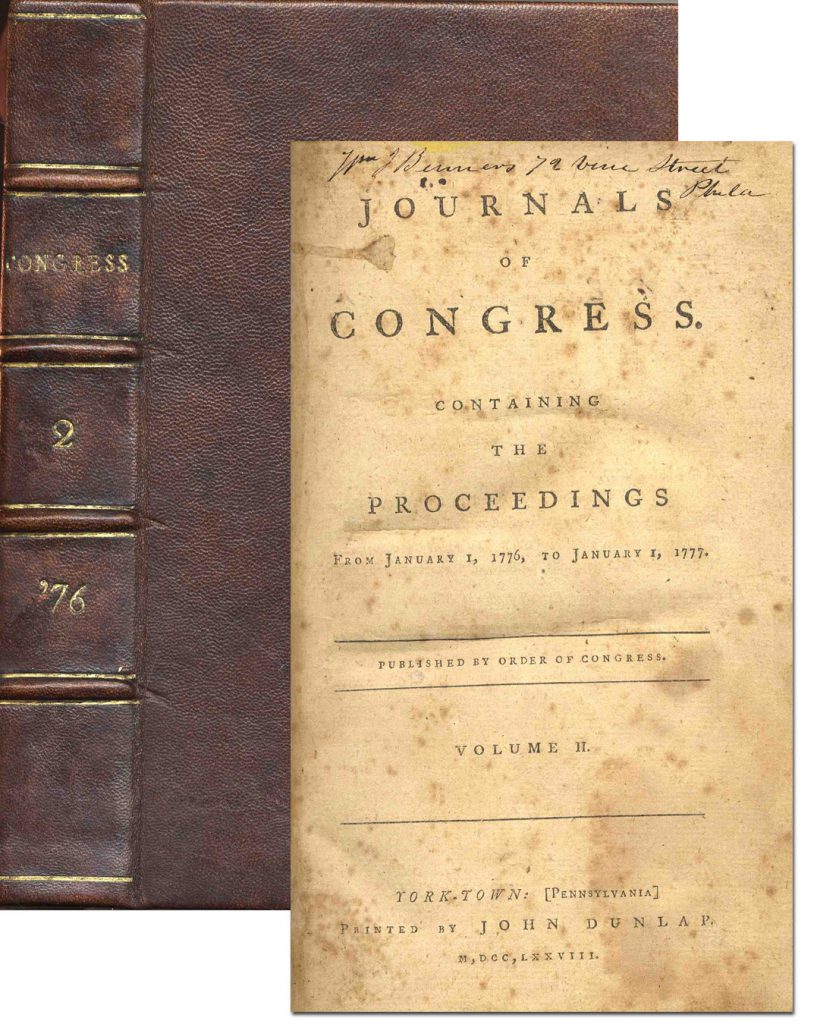
Rare colonial newspaper with content on the Boston Tea Party and a second seizure and dumping of tea that occurred on 7 March 1774. Little is known of this second Tea Party except what has been recorded in a few colonial newspapers, such as this one, and by John Adams who wrote about it in his diary. In this 17 March 1774 edition of ”Rivington’s New-York Gazetteer” (also called the ”Connecticut, Hudson’s River, New-Jersey, and Quebec Weekly Advertiser”), London’s response to the first Boston Tea Party is discussed, as well as details of the second Tea Party aboard the ship of Captain Gorham, who recounts to the paper the following information: ”BOSTON, March 10 / By Capt. Gorham, arrived here in nine weeks from London, we are informed, that…that Governor Pownal [previous Massachusetts Bay Governor Thomas Pownall, sent to Boston to quell the colonists after the Tea Party] will positively go over to Boston early in the spring, in order to take the management of that quarter under his care; that orders have been dispatched, in the courte of the last week, to Ireland, for the immediate embarkation of three regiments to be sent to Boston and New-York; that the Board of Trade had also come to several resolutions relative to American affairs, to be recommended at the same time; and that the latter end of December some advices were received at Lord Darmouth’s office [William Legge, 2nd Earl of Dartmouth, Secretary of State for the Colonies], from Boston, in New-England, which were kept a profound secret…”
The paper continues, ”Capt. Gorham, we are told, has about thirty chests of tea on board, said to be private property, and consigned to some persons here; but what will be the fate thereof, a short time will discover – Certainly not suffered to be landed in Boston! Lord Temple [Richard Grenville-Temple, 2nd Earl Temple], though he has totally declined taking any part in administration means, in conjunction with his noble brother-in-law, Lord Chatham [William Pitt, 1st Earl of Chatham; both men were sympathetic to the colonists], to attend closely to his duty in Parliament the ensuring sessions, in order to defend the liberties, and to watch over the interests, of his much injured countrymen…”
The paper goes onto discuss possible replacements of politicians and also the removal of Peter Oliver, Chief Justice of the Superior Court of Massachusetts Bay, whose salary was dependent upon the taxes levied against the Colonies from tea. The reporting continues, ”…Monday evening [7 March 1774] the tea that arrived in Captain Gorham, from London, belonging to some private persons, was thrown into the sea, in the same manner with that of the East India Company in December last [16 December 1773]…” Coverage appears on the second page of 4pp. paper, measuring 11.25” x 18.25”. Light toning and reinforced fold, otherwise in near fine condition given age. Very rare reporting on the second Tea Party and the beginning of the oppressive measures taken against the colonies as a result. Sold for $3,125.
Philadelphia Newspaper From 18 September 1787, Reporting on the Constitutional Convention That Ended a Day Earlier on 17 September, When the U.S. Constitution Was Signed
Important newspaper reporting on the conclusion of the Constitutional Convention, the body that drafted, deliberated and finally signed the U.S. Constitution on 17 September 1787. Based in Philadelphia, where the Convention deliberated from 25 May to 17 September, “The Pennsylvania Packet, and Daily Advertiser” reports on 18 September 1787 the following: “We have the heart-felt pleasure to inform our fellow citizens that the Federal Convention adjourned yesterday, having completed the object of their deliberations-And we hear that Major W. Jackson, the secretary of that honorable body, leaves this city for New York, this morning, in order to lay the great result of their proceedings before the United States in Congress.” Sold for $2,500.
FREE APPRAISAL. To buy, auction, sell or consign your Pennsylvania Herald General Advertiser September 20 1787 that is for sale, please email your description and photos to [email protected] of Nate D. Sanders Auctions (http://www.NateDSanders.com).
Pennsylvania Herald General Advertiser September 20 1787

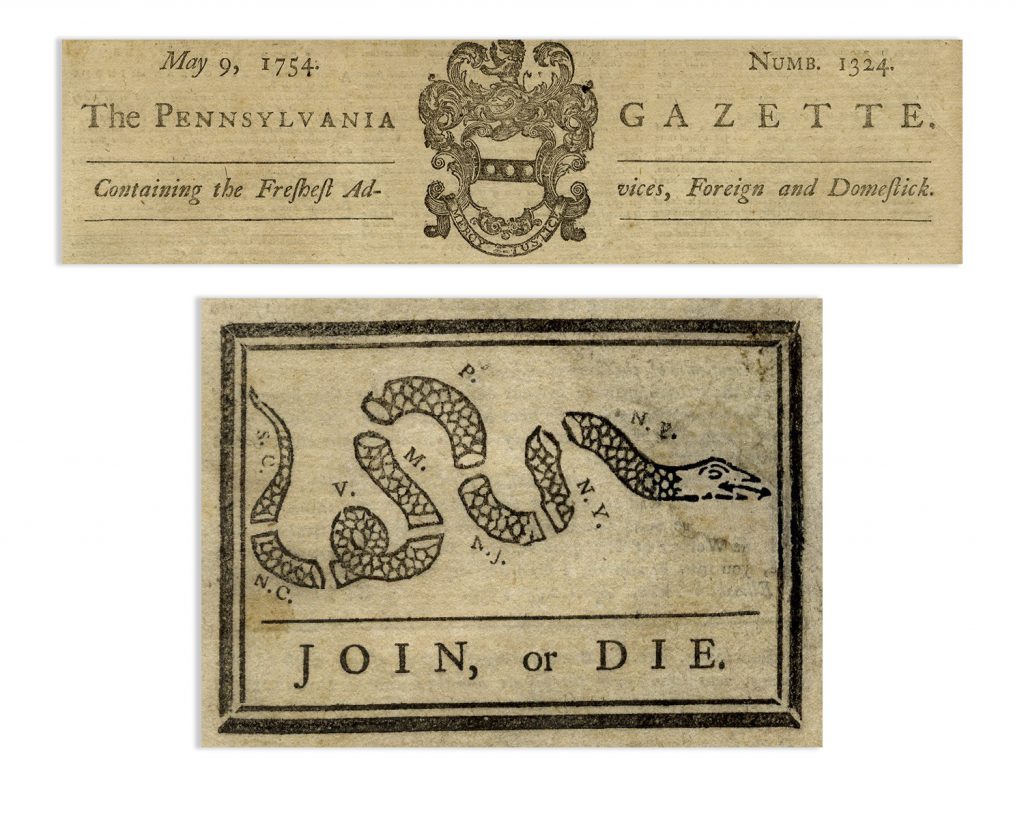
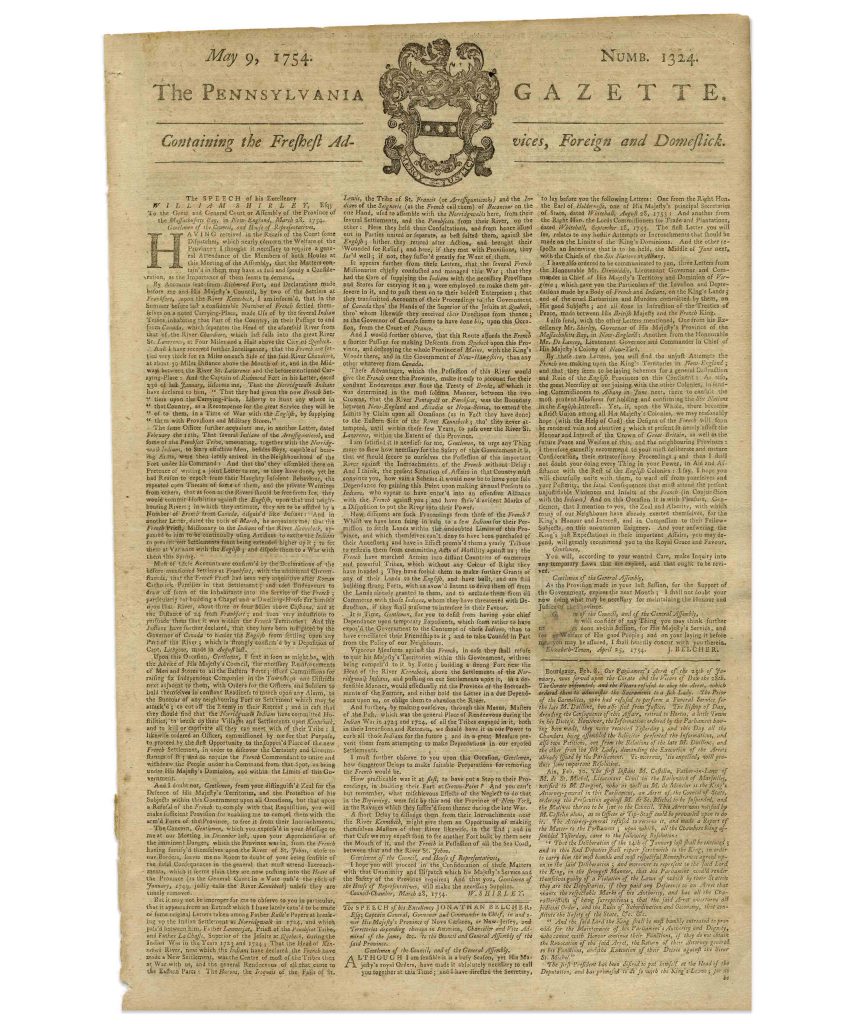
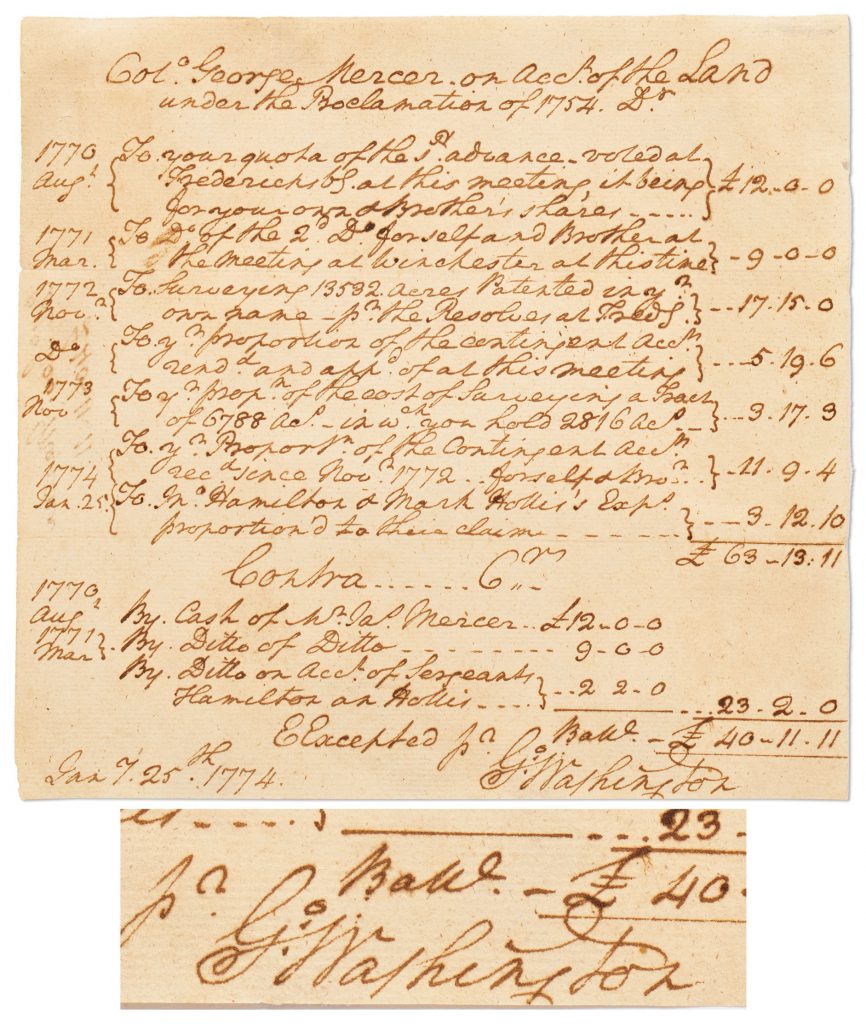
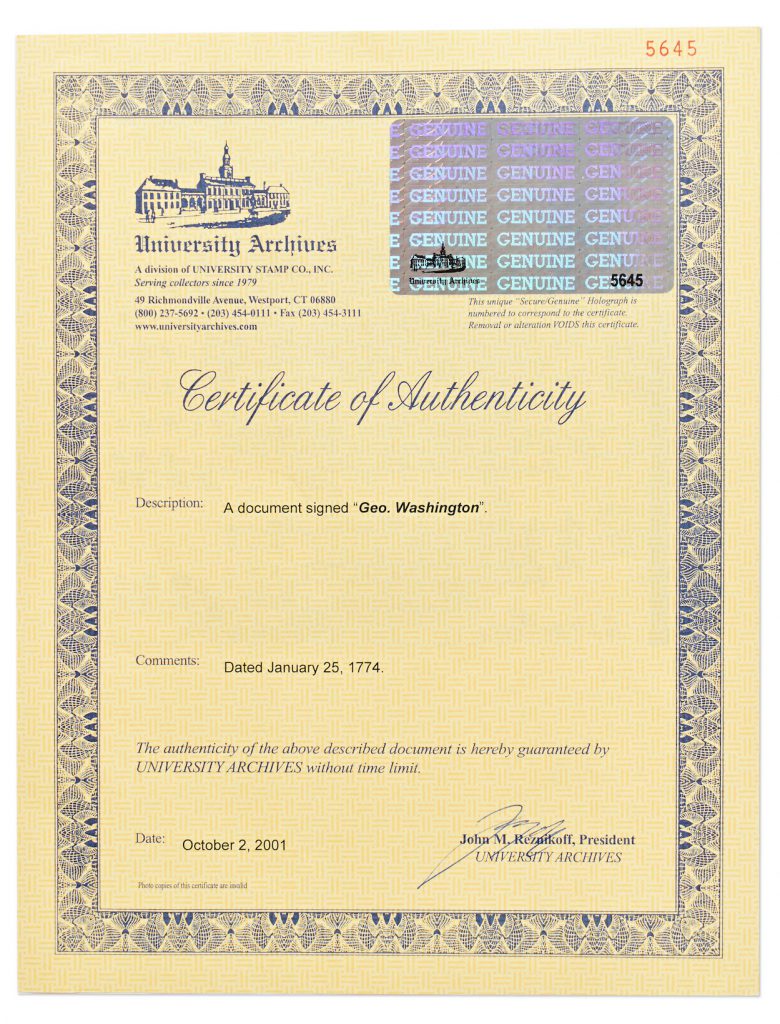
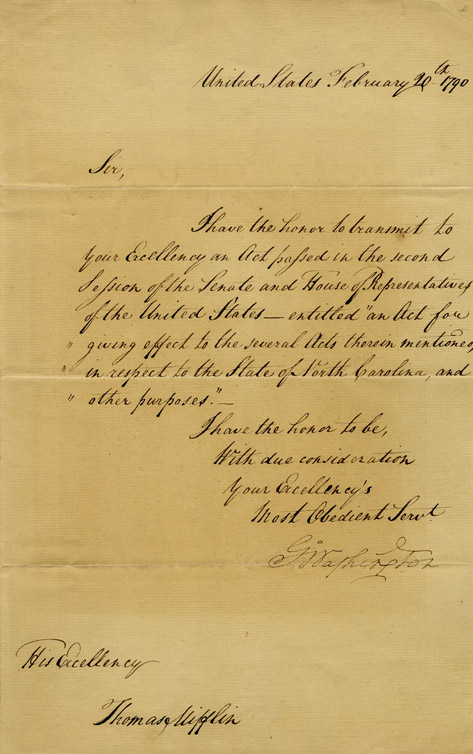
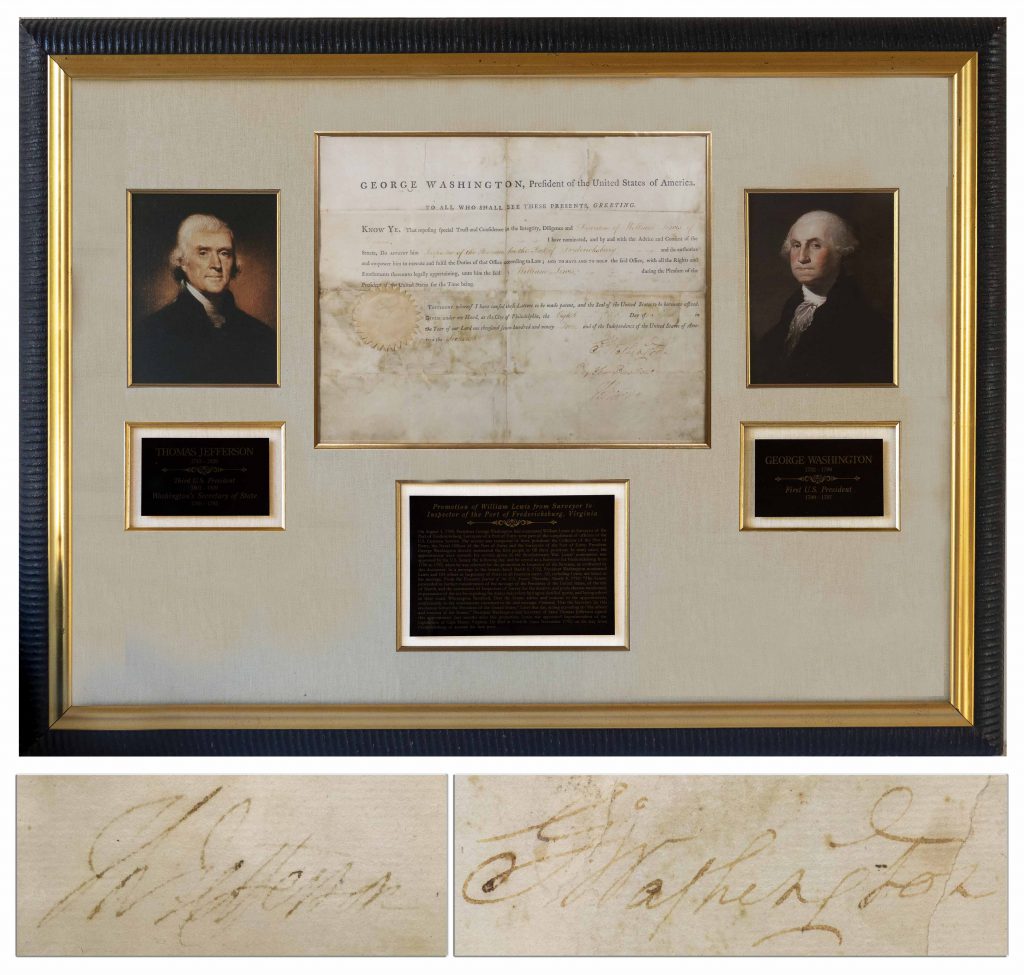
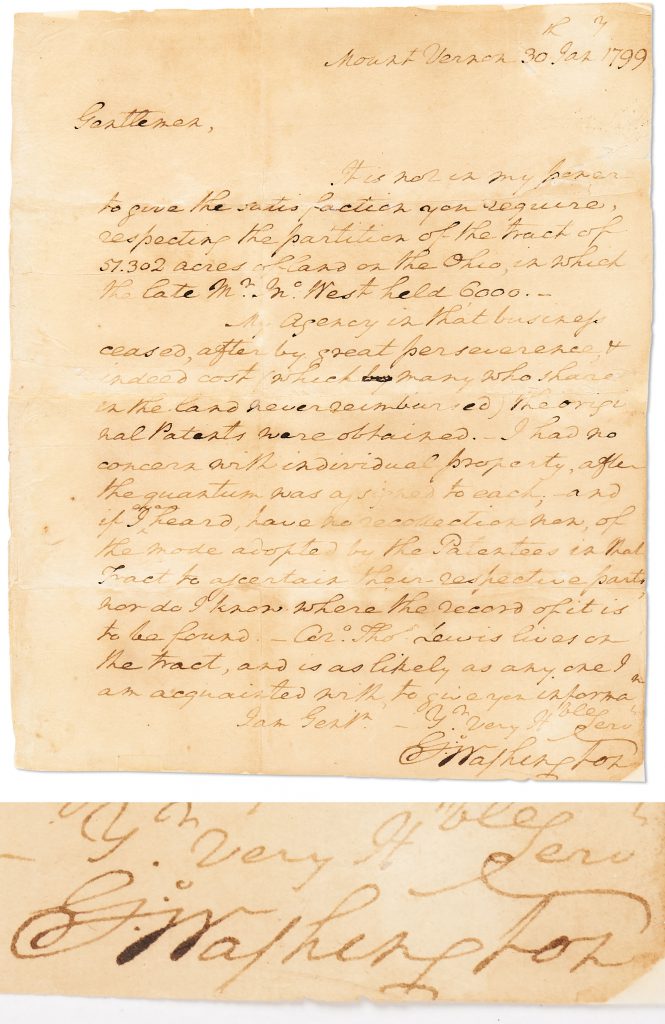
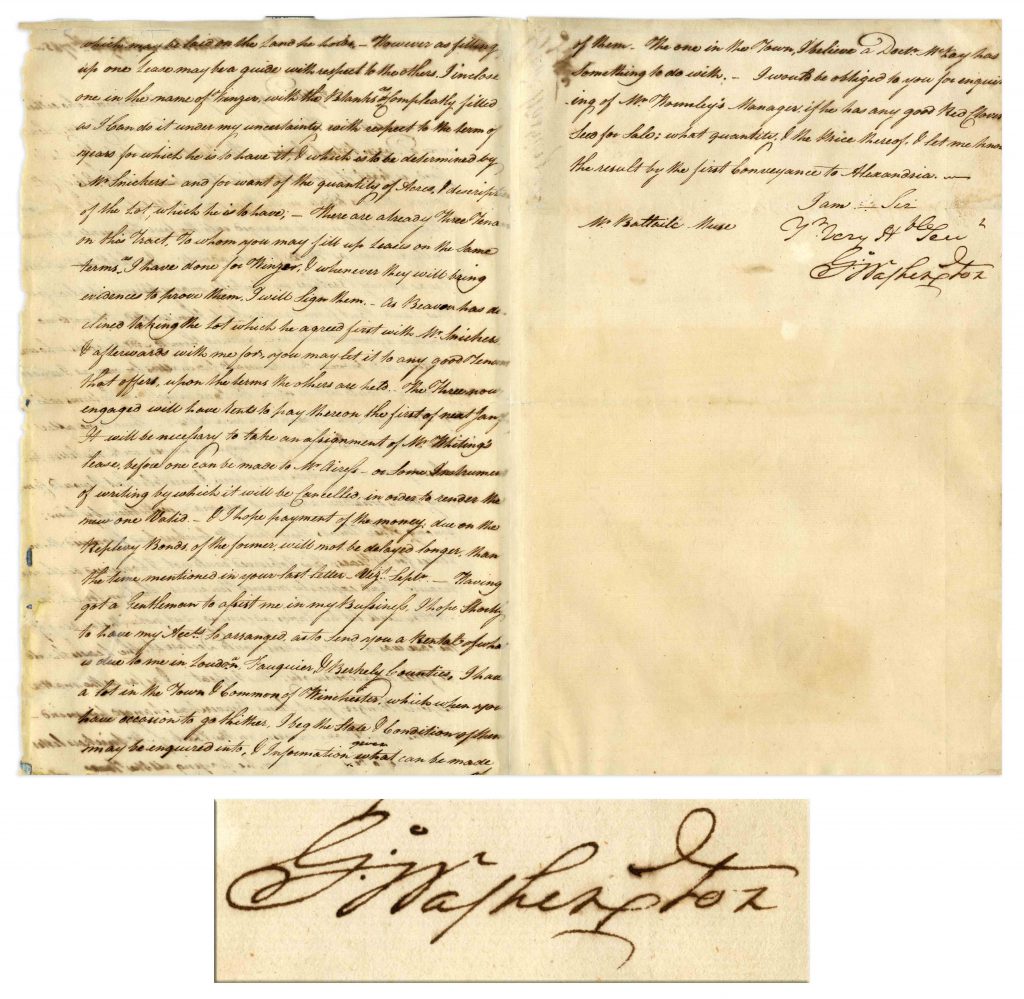
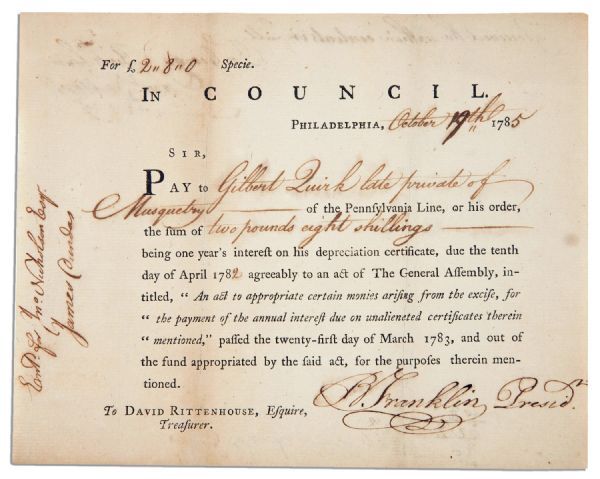
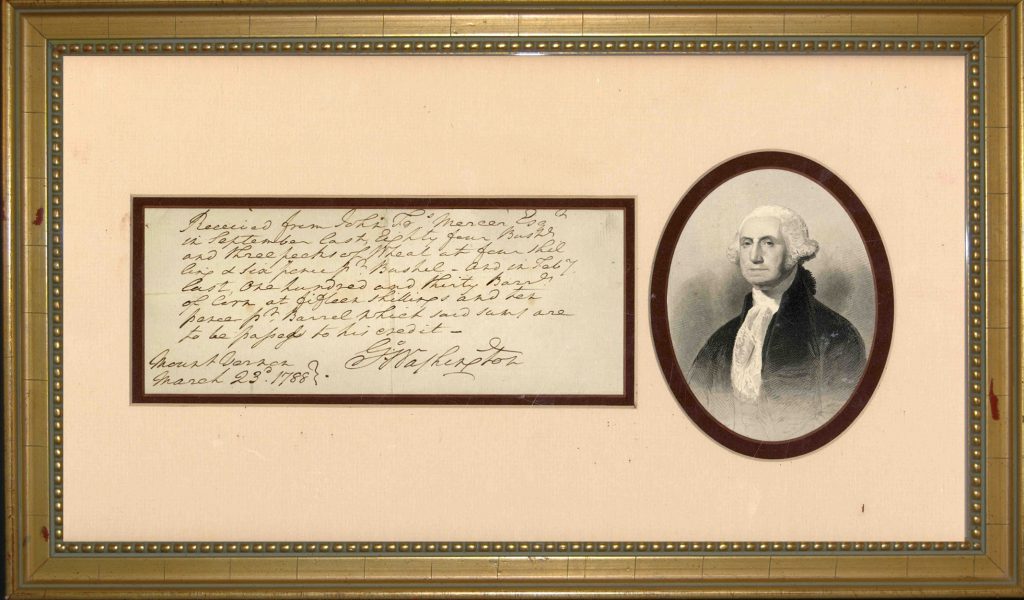
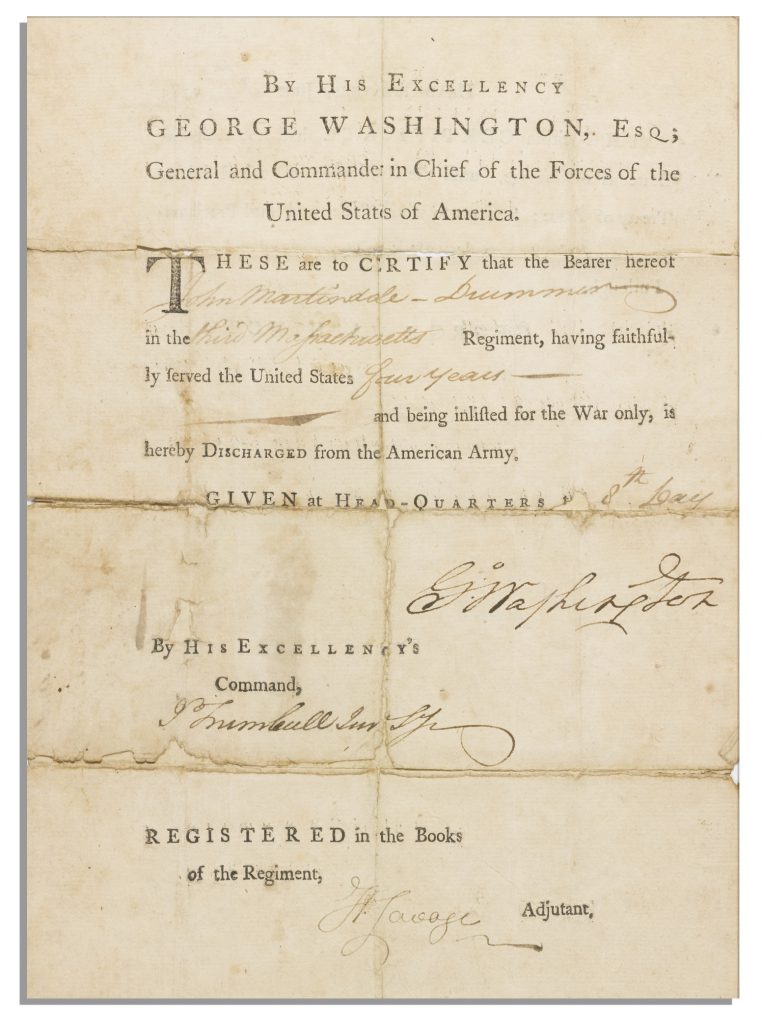
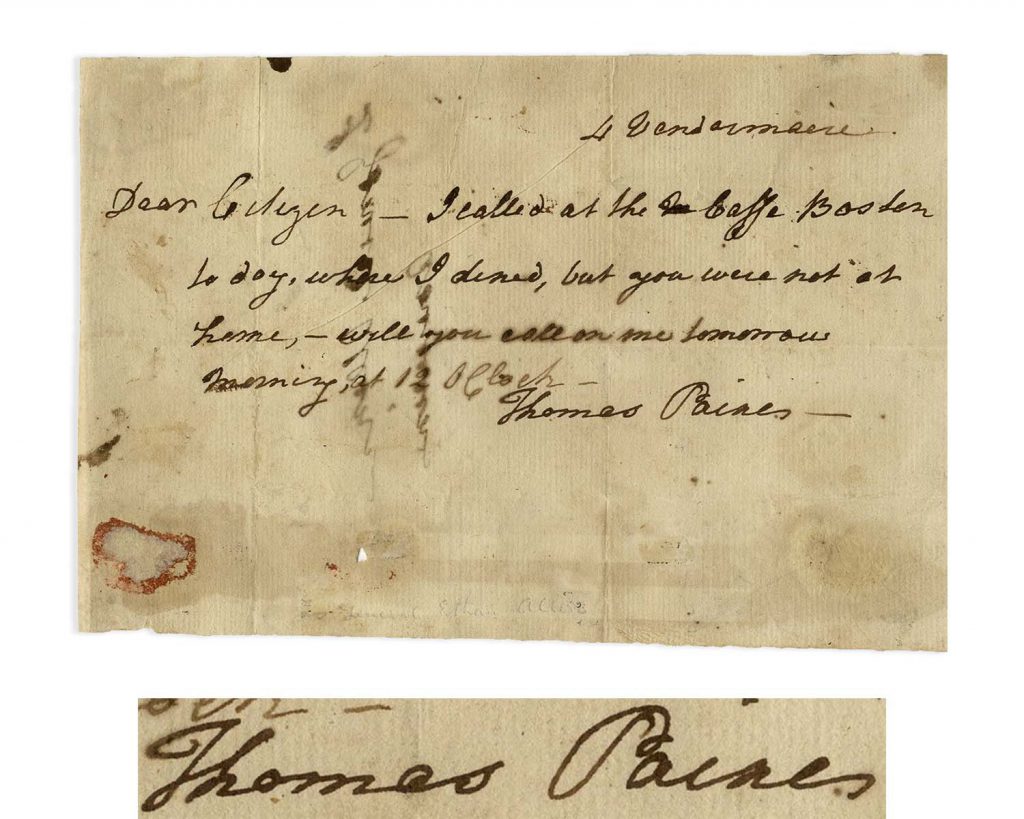
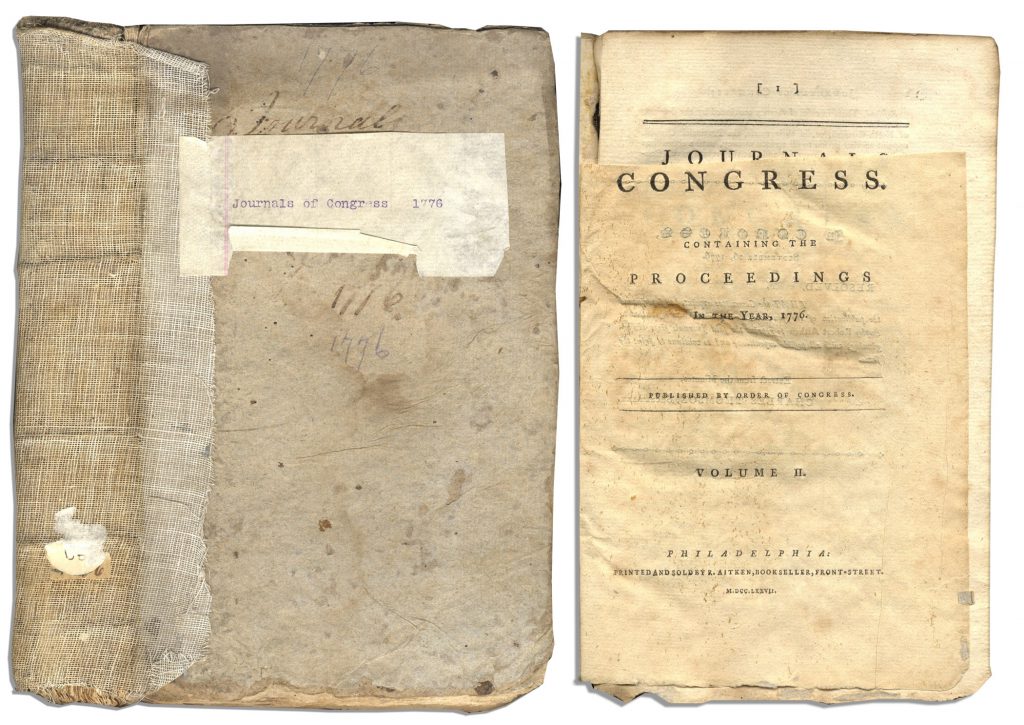
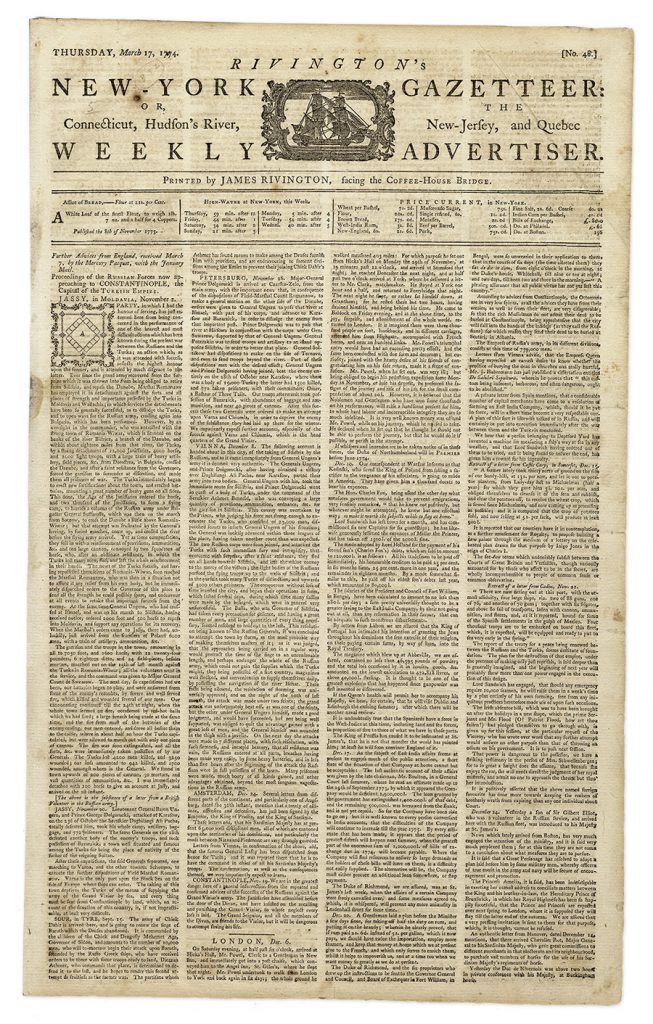
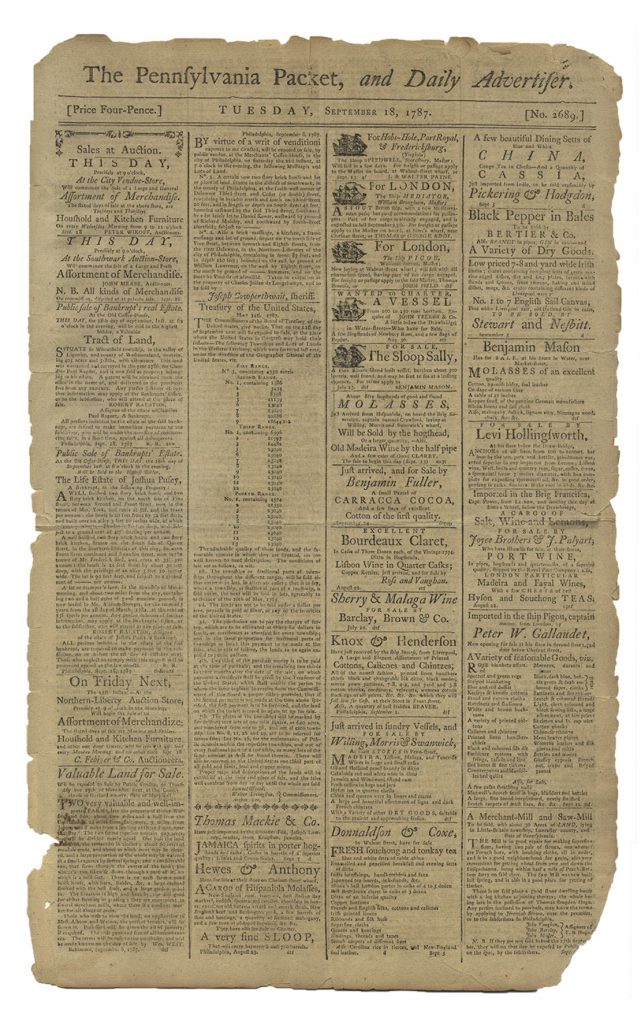
Connect with us